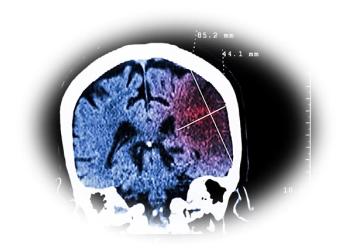
Risk of Atrial Fibrillation is Associated with Gout
A large population-based study found more patients already had atrial fibrillation at gout diagnosis compared with controls.
[[{"type":"media","view_mode":"media_crop","fid":"45050","attributes":{"alt":"","class":"media-image media-image-right","height":"362","id":"media_crop_2454708033740","media_crop_h":"0","media_crop_image_style":"-1","media_crop_instance":"5092","media_crop_rotate":"0","media_crop_scale_h":"0","media_crop_scale_w":"0","media_crop_w":"0","media_crop_x":"0","media_crop_y":"0","style":"float: right;","title":" ","typeof":"foaf:Image","width":"301"}}]]Oftentimes, in a busy clinical practice, we concentrate our history-taking on what we consider “relevant” past medical history, ignoring ancillary problems that may, on the surface, seem unrelated to cardiovascular risk. A recent United Kingdom registry-based analysis revealed that we should probably be devoting more time during the history to these seemingly secondary diagnoses, particularly during questioning about cardiovascular issues. The authors found that a diagnosis of gout is independently associated with a higher prevalence of atrial fibrillation (AF) at the time of diagnosis as well as a higher incidence of AF following the diagnosis.
These conclusions came from analysis of a large outpatient registry, the UK Clinical Practice Research Data, that used cases of gout patients (n=45,378) matched with sex-, practice-, and index-diagnosis-year controls (n=45,378) among patients seen by general practitioners. AF risk was assessed both retrospectively (determining which patients with gout also carried the diagnosis of AF at time of diagnosis, median follow-up 15 years) and prospectively (determining which patients with gout went on to develop AF, median follow-up 9 years). All conditional logistic regression models were adjusted for comorbidities, including BMI, smoking, alcohol use, hyperthyroidism, coronary heart disease, heart failure, and valve disease as there were more AF risk factors in those patients with gout compared to controls.
Approximately three-fourths of the patients in this study were male (72.3%) with a mean age of 62.4 years. At the time of diagnosis of gout, there were significantly more patients who already carried a diagnosis of AF compared to matched controls (7.42% vs. 2.83%, p<.001) with an adjusted OR of 1.45X. Similarly, the probability of developing AF at 1, 5, and 10 years after index diagnosis of gout was significantly higher in gout patients at all timepoints with the cumulative risk being ~1.1X higher for gout patients in adjusted analyses.
The mechanism underlying these findings remains unknown, however the authors postulate that uric acid and hyperuricemia may be involved in the pathogenesis of AF via a role in atrial remodeling. It is possible, too, that inflammation associated with gout may be involved in conferring increased risk of AF. Regardless of the mechanism of these findings, we as clinicians should start considering certain seemingly unrelated medical problems when evaluating and treating patients for cardiovascular diseases.
Source
Kuo CF, Grainge MJ, Mallen C, Zhang W, Doherty M.
Newsletter
Enhance your clinical practice with the Patient Care newsletter, offering the latest evidence-based guidelines, diagnostic insights, and treatment strategies for primary care physicians.













































































































































































































































































